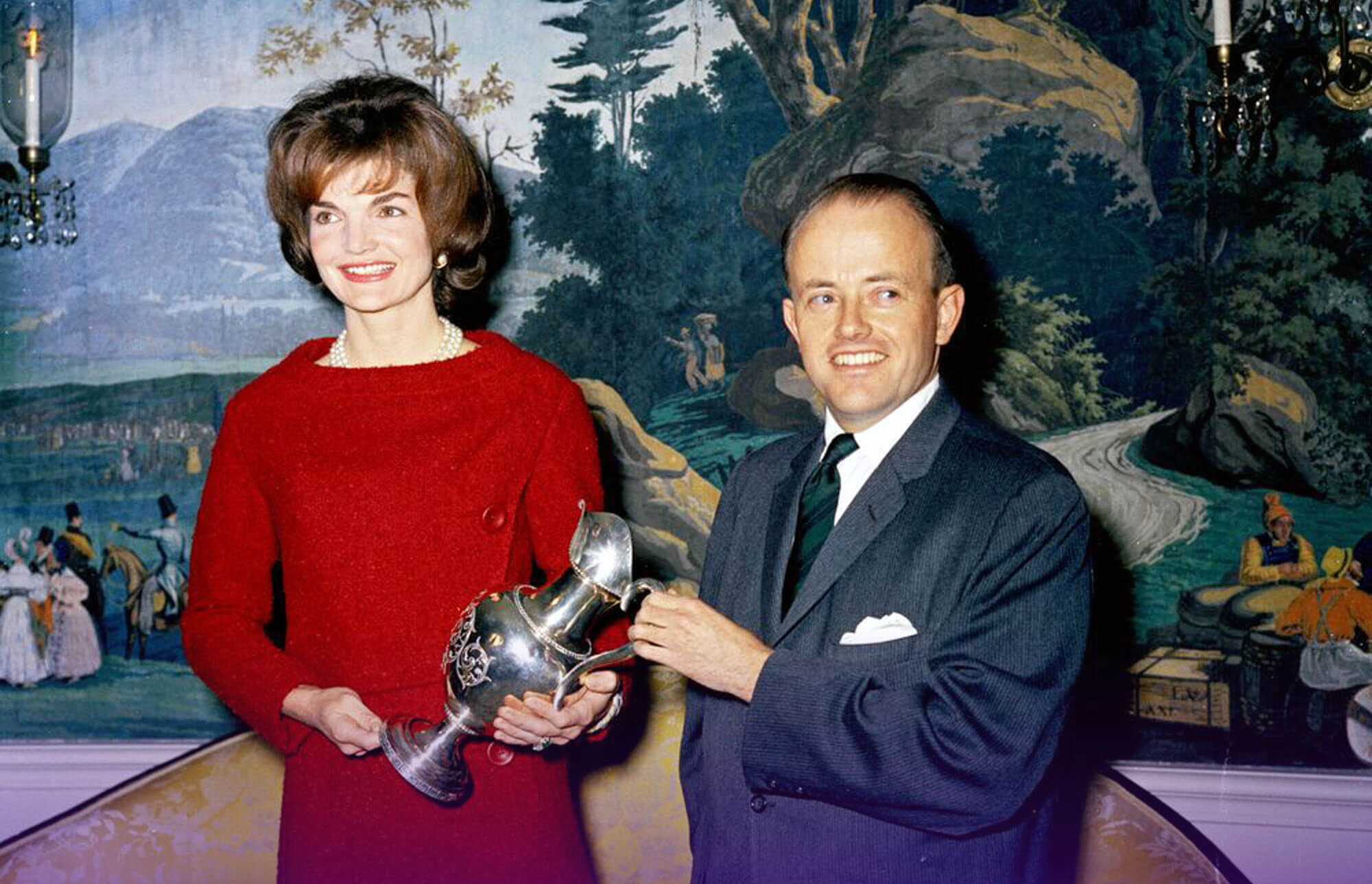When most people think of Jacqueline Kennedy Onassis, they picture the elegant First Lady in a pillbox hat. But Jackie was never just a First Lady—she once quipped the title "sounds like a saddle horse." She was a woman of depth, grace, and quiet strength who moved through history with a sharp mind and unwavering confidence.
She restored the White House, raised children under the scrutiny of the world, edited books in New York, and showed us what it looks like to live with intention and purpose. Jackie lived life with grace, always on her own terms.
Jackie: Writer, Inquiring Camera Girl, and Fashion Muse
Born into New York wealth in 1929, Jacqueline Bouvier was raised with high expectations: attend the best schools, learn to ride horses, speak fluent French, and sip tea just right. But even as a child, she was drawn more to books and poetry than ballrooms and society pages.
She studied literature at George Washington University and spent a transformative year in Paris, where her love of the arts and culture deepened. Before the world knew her name, Jackie worked as a reporter for the Washington Times-Herald, photographing and interviewing strangers on the street for a column called Inquiring Camera Girl. Her questions were bold, even provocative—like “What is your candid opinion of marriage?” and “When did you discover women are not the weaker sex?”
Her fashion sense mirrored her mindset: polished, deliberate, and quietly rebellious. She favored clean silhouettes, timeless colors, and one bold signature, like her iconic sunglasses or that unforgettable pillbox hat.
The Role of First Lady: Strength and Tragedy
In 1953, Jackie married John F. Kennedy, a rising senator with White House ambitions. By the time she was 31, she had become First Lady of the United States; one of the most visible and scrutinized women in the world.
She led the historic restoration of the White House, turning it into a showcase of American art, culture, and heritage. Her now-famous 1962 televised White House tour wasn’t just a public relations angle—it was a brilliant, heartfelt moment that helped Americans connect more deeply with their national identity.
Then came November 1963. The assassination of President Kennedy brought the nation to its knees. In the face of unspeakable tragedy, Jackie remained composed, poised, and deeply human. While carrying the weight of her own grief, she stood as a symbol of courage and dignity for a grieving country.
It was that strength that made her one of the most iconic and respected First Ladies in American history.
Reinvention & Legacy
After the tragedy, Jackie stepped back from public life to focus on her children. In 1968, she married Greek shipping magnate Aristotle Onassis—one of the wealthiest men in the world. The marriage drew headlines and speculation, but Jackie was never interested in public approval. She did what she felt was right for her and her family, just as she always had.
In the 1970s, she returned to her first love: literature. Jackie became a respected book editor at Viking Press and later Doubleday, working on projects that mattered to her and guiding authors whose voices deserved to be heard.
She also became a preservationist, famously fighting to save New York City’s Grand Central Terminal from demolition.
Why Jackie Still Inspires Us
Jacqueline Kennedy Onassis was more than a style icon or public figure. She was a writer, a mother, a quiet revolutionary. A woman who lived with class and conviction, who redefined herself again and again.
For the modern woman—building a dream, navigating a new chapter, or simply finding her voice—Jackie’s story is a reminder that grace and grit can absolutely coexist.
A Final Thought
There’s something especially timely about honoring Jackie now. In a world that demands reinvention, her story reminds us to stay grounded, stay brave, and never stop evolving into the person we’re meant to become.
Let her life be your reminder: You don’t have to follow the script. You can write your own.
She did. And the world noticed.


